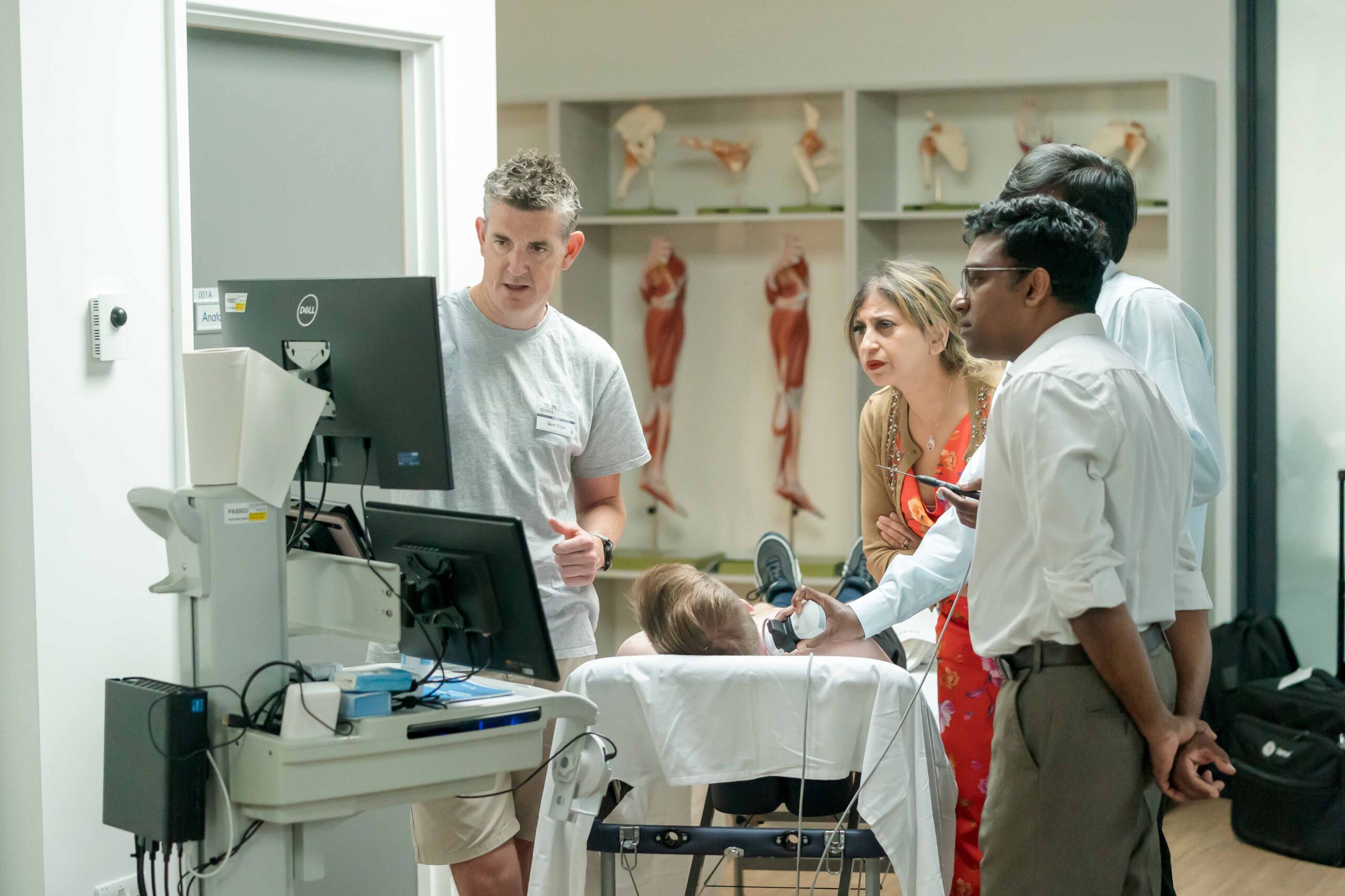The University of Sunderland has teamed up with one of the north-east’s leading anaesthetists to train the next generation of hospital specialists, using artificial intelligence (AI), to deliver regional anaesthesia.
A group of 40 trainee anaesthetists from across the region have attended a two-day course (Monday 24 June – Tuesday 25 June) at the University’s Anatomy Centre, City Campus, to explore AI-assisted ultrasound scanning in the administration of regional anaesthetic.
Regional anaesthesia is routinely used in surgery as it allows for shorter hospital stays, earlier patient mobilisation and reduces post-operative pain. Local anaesthetics are injected close to major nerves to numb large areas of the body, manage pain and allow patients to be awake during surgery. All trainee anaesthetists are expected to learn how to perform regional anaesthesia of the abdominal wall, chest wall and lower and upper limbs.
On the Regional Anaesthesia course, trainees first studied advanced anatomy using cadaveric specimens at the University’s anatomy lab and then learned how to use ultrasound to scan patients in order to locate nerves.
The technology provided by AI software and simulation specialist Intelligent Ultrasound enabled trainees to scan volunteer models and to use virtual needles to practice their injection technique. The AI technology recognises the anatomy in the ultrasound images and can assist trainees in finding the correct location for inserting the needle.
Dr Gurpreet Sondh, an anaesthetics trainee, said: “I thoroughly enjoyed the multimodal teaching aspects of the SUGRA (Sunderland Ultrasound-Guided Regional Anaesthetists) course including the didactic style of teaching, the incredible cadaveric studies and hands on approaches.
“There has been plenty of space and time to practice with such enthusiastic teachers. I feel that I’ve learned how to perform some of the more difficult blocks today and the AI aspects have really helped to identify some of the structures that I find quite difficult to visualise when scanning patients; this has enhanced my learning and improved my foundation in this topic.
“The use of the AI simulated needle when scanning models provided an extra layer of realism to my training. The course has been well worth attending.”
The University of Sunderland is one of three UK universities to provide the training – alongside University College London (UCL) and the University of St Andrews in Scotland.
Dr Nathaniel Haslam is a Consultant Anaesthetist at South Tyneside and Sunderland NHS Foundation Trust and President of Regional Anaesthesia-UK (RA-UK), which is the UK’s national specialist society for standard setting and education in regional anaesthesia.
On delivering the training at Sunderland, Dr Haslam said: “I am absolutely delighted to be collaborating with the University of Sunderland. We are bringing UK and world-leading, AI-enabled, educational technology to the University’s Anatomy Centre and using it to train the next generation of hospital consultants.
“By running this nationally recognised course at the University of Sunderland, and by using cutting-edge, innovative technology to enhance training in the healthcare setting, we will ensure that regional anaesthesia, a technique proven to reduce pain and improve outcome in our patients, is available in this region and beyond.”
Debs Patten, Professor of Anatomy at the University of Sunderland, said: “Detailed anatomical knowledge is essential for the safe practice of ultrasound-guided regional anesthesia. Being able to provide instruction using cadaveric anatomy is key to delivering an authentic learning experience for practicing anesthetists.
“Staff in the Anatomy Centre have worked closely with Dr Haslam and his colleagues to deliver bespoke resources and support for this course. It has been a great success and another example of excellent partnership working.”
Pro Vice-Chancellor and Dean of Health Sciences and Wellbeing at the University of Sunderland, Professor Laura Stroud, said: “The Anatomy Centre is a fantastic resource with teaching across a full range of professions – from medical students and midwives to physiotherapists and paramedics.
“By working and training together, we support the aspiration of the Long Term Plan for the NHS. It is particularly pleasing that our facility is also being used in the training of postgraduate clinicians – we are delighted to welcome the Regional Anaesthesia course attendees.”
For more information on studying Anatomy at University of Sunderland, visit: https://www.sunderland.ac.uk/student-experience/explore/health-sciences-wellbeing/teach_anatomy/
